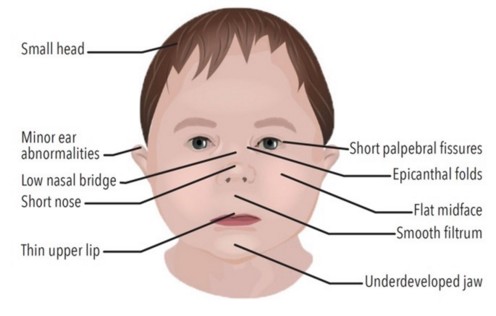(Fetal alcoholism)
Estimated prevalence: 1/1.000 live births in U.S.A. Most common teratogenic disorder: it is due to alcohol ingestion by the pregnant mother and caused by the combined effects of alcohol and acetaldehyde. The phenotype is highly variable.
Clinical presentation:
- intrauterine and postnatal growth retardation (< P10)
- craniofacial anomalies: maxillary hypoplasia, absence of philtrum, cleft lip and/or palate, low-set ears, short neck
- ocular and central system anomalies (microcephaly, hyperactivity, epilepsy)
- congenital heart disease: ASD, VSD
- renal anomalies: hypoplasia, horseshoe kidney.

Anesthetic implications:
risk of difficult intubation; echocardiography
References:
- Finucane BT.
Difficult intubation associated with the foetal alcohol syndrome.
Can Anaesth Soc J 1980; 574-5.
- Frost EAM.
Pitt-Hopkins syndrome, Rubinstein-Taybi syndrome, Fetal alcohol spectrum disorders.
Anesthesiologynews.com 54581, April 16, 2019. 6p
Updated: November 2022